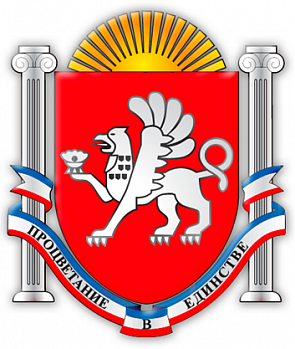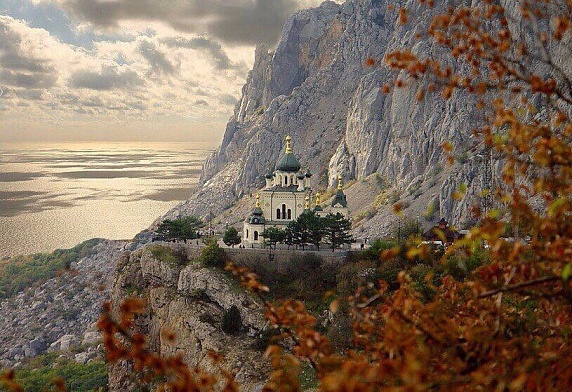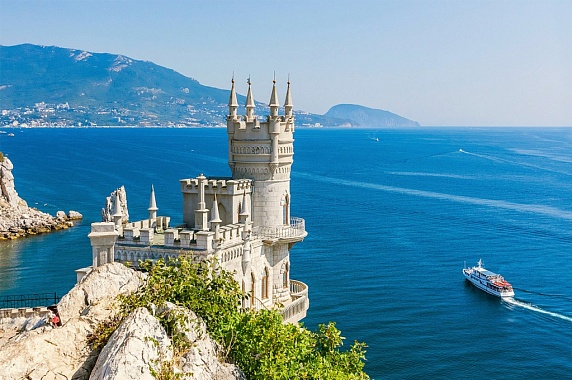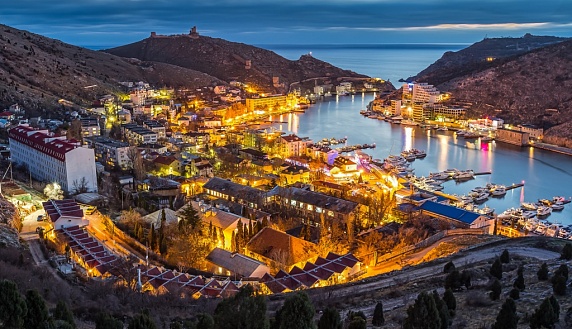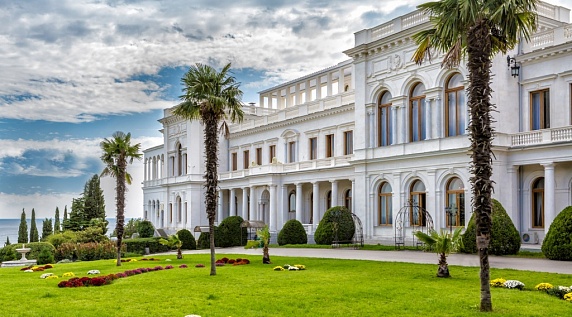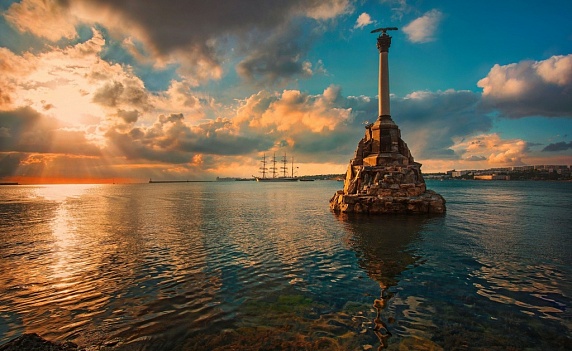 Республика Крым
Республика Крым
Brief comparative analysis of the situation in Crimea before and after its accession to Russia
Unofficial translation
In 1992-2014, the Ukrainian authorities treated the peninsula and its citizens "by residual principle". Its economy virtually stagnated, the humanitarian sphere underwent total Ukrainization, and environmental objectives were neglected in a barbarian way.
The Gross Regional Product (GRP) per capita in Crimea as part of Ukraine compared to its other regions was less than the country's average: 43.6% less in 2000, 31.1% – in 2005, 29.5% – in 2013. By March 2014, it amounted to 100,500 rubles and was 4 times below the Russian average. (In 2014-2019, the Crimean GRP grew up to 245,500 rubles, i.e. 2.5 times).
As Head of the National and Cultural Autonomy of Crimean Tatars Eivaz Umerov rightly pointed out in media in August 2021, "during a brief period of being part of the independent Ukraine, the latter did not manage to leave any significant architectural, infrastructure or other meaningful legacy on the peninsula. As a State, Ukraine did not manage to create a bond with the Crimeans in general and the Crimean Tatars in particular."
Since the return of Crimea to its home Russian "harbour", the situation on the peninsula has been gradually improving with growth rates among the highest in the country. There has been sustainable regional budget growth (it has tripled since 2014), housing construction and industrial manufacturing have been gaining momentum, there are signs of recovery in agriculture, and the traditionally important tourist and resort sector has been strengthening its position.
The federal target program "The Social and Economic Development of the Republic of Crimea and Sevastopol until 2020" (FTP, prolonged until 2025) approved by Russia's Government on 11 August 2014 has been implemented. Part of the Program's objectives were already fulfilled in 2015-2020: the transport and engineering infrastructures were significantly improved, as well as the quality of the region's energy supply; and there is increasing development in the social sphere, as well as stable ethnic and religious harmony in the region.
In Russia, the real wages of the Crimean public sector employees, pensions and social payments rose and approached the all-Russian level. As of October 2020, the average salary amounted to 32,400 rubles (450 USD), whereas in 2013 in was no more than 2,700 hryvnias (335 USD).
In response to Ukraine's energy blocade of Crimea in 2015, interim schemes to supply power to the peninsula were promptly established: there were hundreds of mobile high-capacity generators brought and an "energy bridge" created – supply cables and the undersea gas pipeline were laid from the Kuban via the Kerch Strait. As of today, the problem of the Crimea energy supply is solved.
After Kiev’s culpable water blockade of Crimea in 2014 as a result of the shutting-off of the North Crimean Canal, the security of the peninsula water supply became the priority for federal and republican authorities. To solve this problem, 100 km of new pipelines have already been put to work, and the Belbek water intake (50,000 cubic meters of water per day) became operational in March 2021 with the Nezhinskiy, Prostornenskiy and Novogrigoryevskiy water intakes to be constructed by the end of the year. A number of desalination units are being installed. Works to drill fresh water from under the Azov Sea to be supplied to settlements in North Crimea started in 2021.
Since 2015, over 950 km of roadways have been renovated in Crimea with 2 km of them to be modernized by 2024.
A historic event was the start in 2018 of the highway service along the Crimean bridge, which was constructed in record-breaking time. The railway part of the bridge was put to work and the passenger traffic started in 2019 and the fright traffic commenced in 2020, as well as the service of the Tavrida Highway (Kerch – Sevastopol).
The new Simferopol International Airport named after Ivan Aivazovsky with annual capacity of 10 mln people started its work in 2018.
Crimea's resort industry is recovering. In the 2019 pre-pandemic year, 7.43 mln people spent their vacations there (in the Ukrainian period, no more than 5.5 mln tourists visited the peninsula annually).
Before 2014, Crimea saw a prevailing tendency towards Ukrainization in all spheres, including education. After its reunification with Russia, the Republic’s Constitution set forth three State languages (Russia, Crimean Tatar and Ukrainian). In line with the public demand the main part of the so-called "bilingual" (Russian-Ukrainian) schools have received the former status of Russian-language schools. However, the schools with the Crimean Tatar language of instruction that had worked in the Ukrainian period remained everywhere.
For reference, since 2014 Ukraine has still had no Crimean Tatar language courses and no textbooks (the Krimuchpedgiz publishing house is located in Simferopol). In Ukraine, there is no a network of schools/kindergartens using Crimean Tatar as the language of instruction as such.
In the framework of the FTP implementation, projects in the field of culture, art and protection of the Crimean peoples' legacy have realized since 2015.
Russian President's Decree "On the Measures for the Rehabilitation of Armenian, Bulgarian, Greek, Italian, Crimean Tatar and German Peoples and the State Support of Their Revival and Development" revised on 12 September 2015 is a fundamental international relations achievement. Since 2014, persons earlier repressed due to their nationality have been allocated over 100,000 land parcels for individual housing construction.
In the Russian Crimea (compared to the Ukrainian) the policy to maintain the language equality and diversity is established at the legislative level. Today, in contrast to the Ukrainian period, there is public Crimean Tatar TV channel "Millet/People" and radio channel "Vatan/Motherland".
In the seven-year period, 40 new mosques were built in Crimea. The construction of the Main Cathedral Mosque with a capacity of 4,000 people is being finalized. Crimean Tatars make pilgrimages to Islamic holy places in Saudi Arabia (in 2019, up to 1,000 people unlike 100-150 pilgrims in the Ukrainian period).
The Russian Crimea is as open as possible to foreign guests. Only in 2020 with the assistance of the Russian MFA around 30 visits of foreign representatives were organized. Among the most important was the July 2020 visit of the delegation of the European Parliament deputies from France, Bulgaria and Sweden, who observed the elections on the changes to the Russian Constitution. The Region was also visited by the Italian municipalities' delegation. Many foreign guests were present at the representative forum on the occasion of the 75th anniversary of the Yalta Conference in October 2020.
The Russian side regularly expresses openness to visits to Crimea and Sevastopol at the Meetings of the OSCE Permanent Council and the Committee of Ministers of the Council of Europe. In 2016, Crimea was visited by Special Representative of the Secretary General of the Council of Europe Gérard Stoudmann.
Some other representatives of international human rights organizations show interest in visiting Crimea, however they insist on entering the Russian peninsula from Ukraine. This approach reveals their true goals: not to understand the real situation with human rights in Crimea but to play up to Kiev in its Russophobic ultra-nationalist campaign.
We reiterate: representatives of multilateral organizations and in general everyone sincerely willing to learn how the Crimeans live, without any politicization, may do it any time.
August 2021

